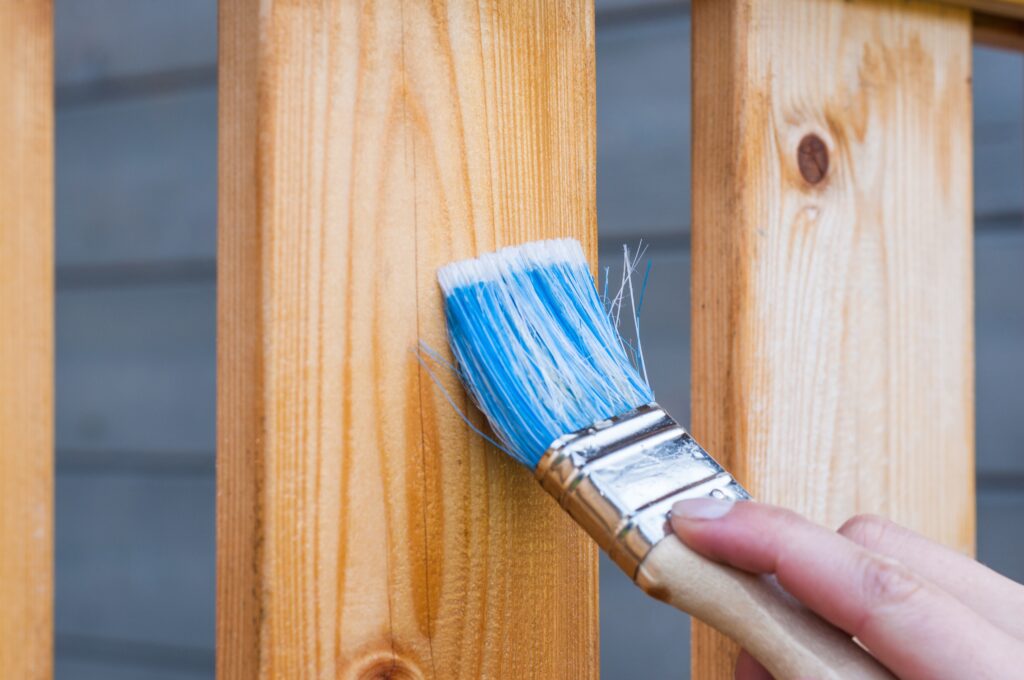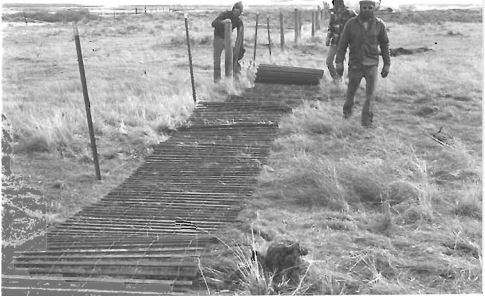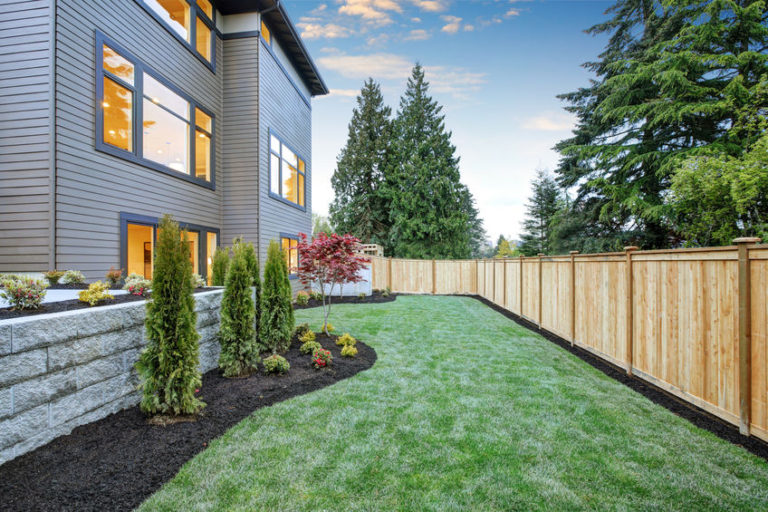Wooden fences are a classic and timeless addition to any New Jersey property, providing both privacy and aesthetic appeal. However, with exposure to the elements and the potential for rot, decay, and insect damage, wooden fences require regular maintenance to ensure their longevity. And using pressure-treated wood for fences on your NJ property is critical in preventing decay.
One way to extend the life of a wooden fence is to use pressure-treated wood during construction. In this article, we will explore the benefits of pressure-treated wood for fences and why we use it as a New Jersey Fence Company, including the pressure-treatment process and the types of wood commonly used.

Maintenance considerations such as painting versus staining, cleaning methods, and best practices for preventing damage must be considered when selecting a wood fence. Here’s what you need to know about pressure-treated wood for fences and how to properly maintain them.
What Is Pressure Treated Wood For Fences?
Pressure-treated wood is a commonly used material in outdoor construction projects. The process of pressure treating involves saturating the wood with chemicals that prevent wood rot and insect damage, increasing the lifespan of the wood.
The term “pressure” refers to the application of high pressure during the treatment process, which forces the chemicals into the innermost parts of the wood. This can make the wood more durable and resistant to rotting, making it an ideal choice for outdoor structures like decks, fences, and retaining walls.
While pressure-treated wood may come at a higher cost, the added longevity and strength it provides can make it well worth the investment. However, it’s important to note that the chemicals used in pressure treatment can be harmful if ingested or inhaled, so proper safety precautions should always be taken when working with this material.
Does the Entire Fence Need to Be Pressure Treated?
Typically, only the fence posts are made of pressure-treated wood, while the rest of the fence is constructed using untreated wood. This is because the fence posts are the part of the fence that comes into contact with the ground and is therefore they are treated to help prevent wood rot and fungal decay.
However, if a wooden fence is not in contact with the soil, it is not necessary for the entire fence to be constructed of pressure-treated wood. For example, if the fence is built on a concrete foundation or if it is attached to a masonry wall, it may not require pressure-treated wood at all.
It’s important to assess the specific conditions of your fence’s location and consult with a professional to determine the best construction methods and materials for your situation.
Are Fence Posts Pressure Treated Pine?
Generally, pressure-treated pine is the more economical option and also has the added benefit of being resistant to rot and insect damage due to the pressure treatment process.
However, cedar is a more durable and aesthetically pleasing option, as it naturally repels moisture and insects typically found in your New Jersey yard a property. Cedar has a distinct color and grain pattern that compliments both residential and commercial projects in NJ.
Ultimately, the decision between pressure-treated pine and cedar fence posts will depend on personal preference and budget. It’s important to weigh the pros and cons carefully before making a final decision.
Environmental Considerations
In recent years, pressure-treating wood has become a popular choice for many construction projects. However, before committing to using this type of wood, it’s important to understand the pros and cons of it from an environmental standpoint.
On one hand, pressure-treated wood can be extremely durable and resistant to wood rot and insects, which means it will last longer and require less maintenance. On the other hand, the process of treating the wood involves using chemicals that can be harmful to the environment, particularly if they leach into surrounding soil or water sources.
Additionally, disposing of pressure-treated wood can be challenging because of its potentially hazardous nature. It’s important to weigh these factors and consider all options before choosing to use pressure-treated wood in order to minimize negative impacts on the environment.

Maintenance Considerations for Pressure-Treated Fences
Wooden fences are a beautiful addition to any home, but just like any investment, they require regular maintenance to keep their appeal. Neglecting your wooden fence can lead to a range of problems, from rotting and insect infestation to warping and discoloration.
By investing time and effort into regular maintenance, however, you can keep your wooden fence looking as good as new for years to come. This includes regularly cleaning your fence, staining with an exterior oil-based stain, and repairing any damage or peeling paint as soon as it arises.
Not only will this increase the lifespan of your fence, but it will also help maintain the overall value of your property. So, to ensure your wooden fence remains a beautiful and functional addition to your home in Monmouth County or Ocean County, New Jersey, don’t forget to give it the attention it deserves!
Is It Okay To Get Your Fence Wet
Pressure-treated fences are a popular choice for many homeowners because they are durable and resistant to rot and insect damage. However, when it comes to maintenance, many people wonder if it is okay to get their pressure-treated fence wet. The answer is yes, it is safe to get your fence wet.
In fact, a little bit of water can help remove dirt and grime, which can prolong the life of your fence. Just be sure to avoid using harsh chemicals, as these can damage the wood. With proper care and maintenance, your pressure-treated fence can continue to protect and beautify your NJ property for years to come.
Cleaning Methods for Pressure-Treated Fences
Pressure-treated fences are often exposed to harsh elements like constant sunlight, heavy rain or snow, and even mold growth. To prevent your fence from becoming an eyesore, it’s crucial to employ quality cleaning methods that will not only remove accumulated dirt, grime, and other debris but also preserve the fence’s natural beauty.
One common method is using a power washer, but you’ll need to be careful with the pressure so that it doesn’t damage the wood fencing surface. Alternatively, you can use a simple soap-and-water solution with a scrub brush or broom to clean the fence’s surface gently. Ultimately, the method you choose should leave your fence looking as good as new and extend its lifespan.
How Expensive Is Pressure Treated Wood
While prices can vary depending on your location and the specific type of wooden fencing you’re looking for, pressure-treated lumber tends to be an affordable choice for many homeowners. Of course, prices will still fluctuate based on several factors, but for the most part, pressure-treated wood should be an affordable option for many DIYers and professional builders alike.
Final Thoughts About Pressure Treated Wood
Pine fences can be a great option for people trying to protect their yards. It is affordable and very durable, making it ideal for use in outdoor structures like fences that are exposed to harsh elements. Furthermore, with proper maintenance techniques such as regular cleaning and staining or painting, you can keep your wooden fence looking beautiful while also extending its lifespan.



